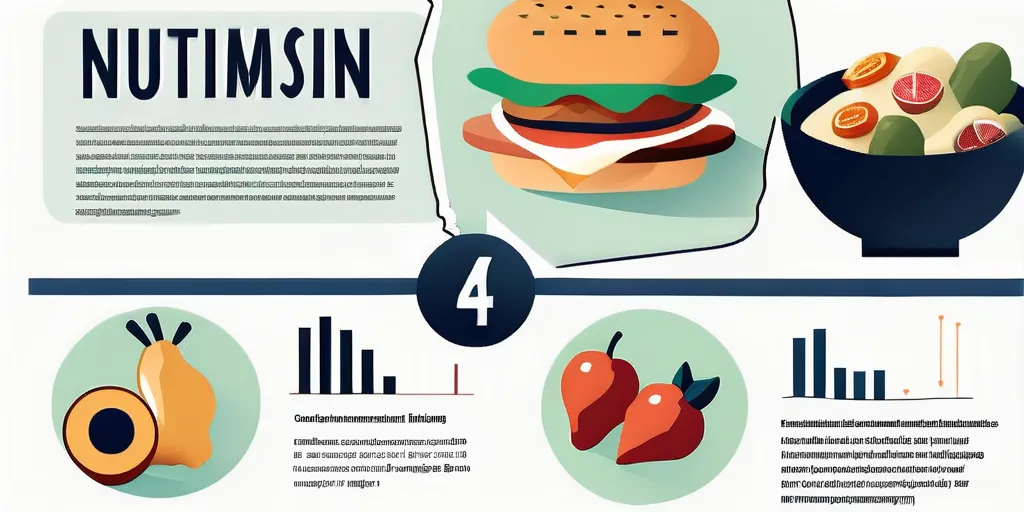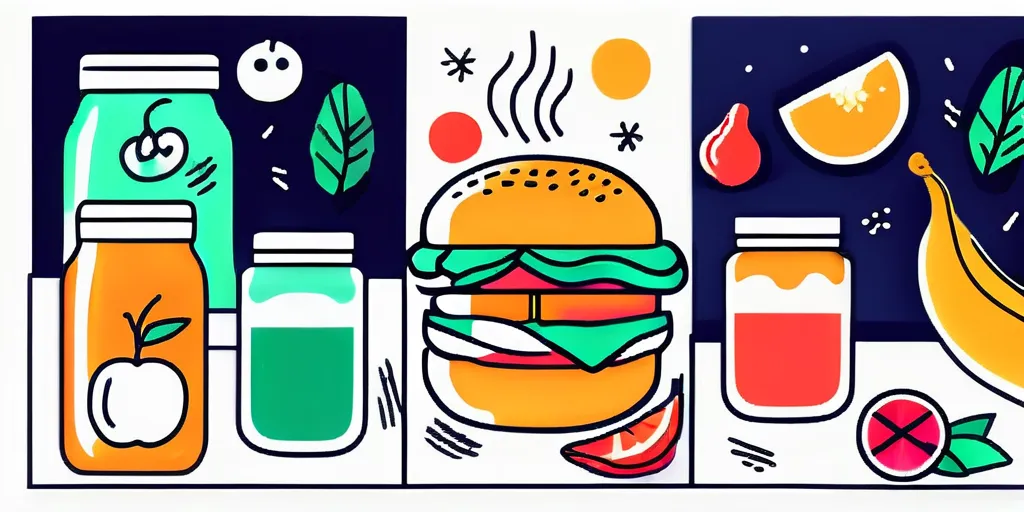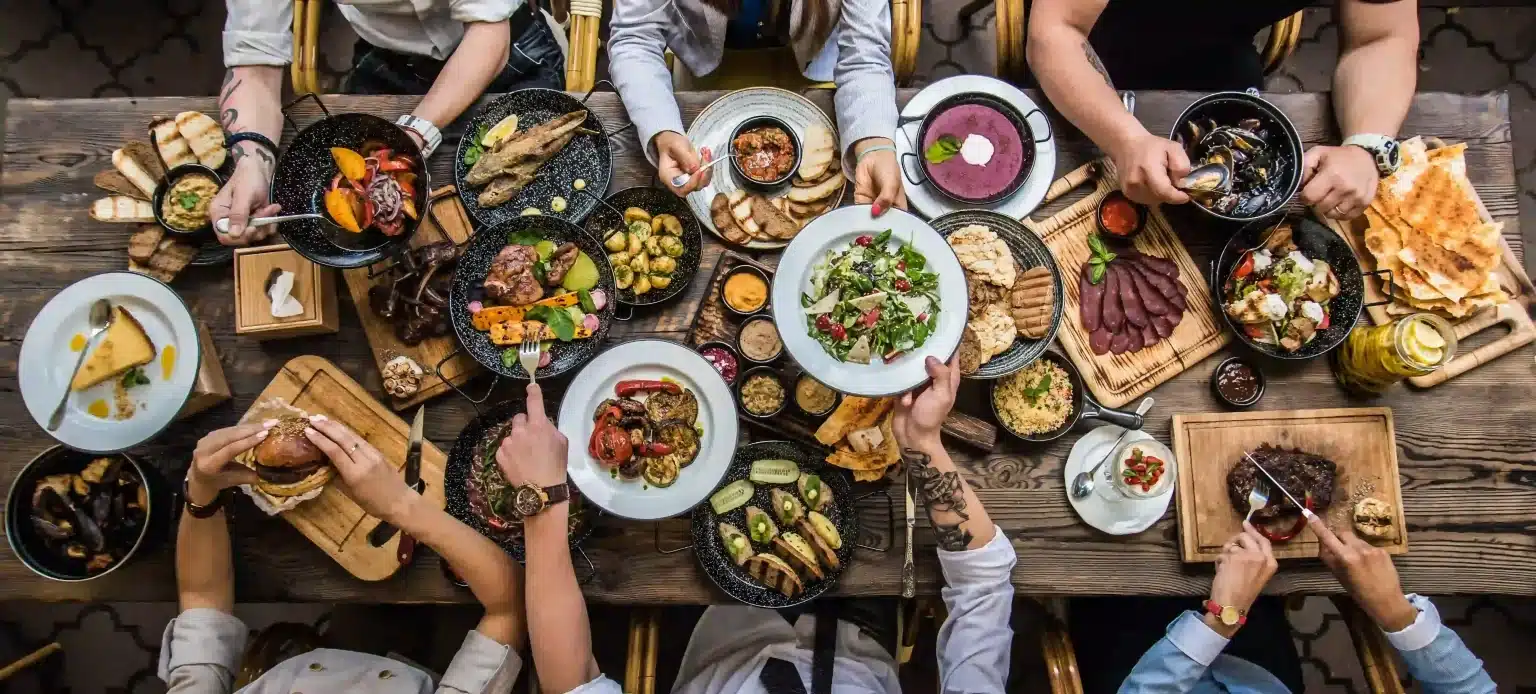Food is not just something we eat to survive. It’s a fascinating world full of flavors, colors, and textures that can transport us to different cultures and times. In this article, we will dive into the intriguing world of food trivia to uncover some mind-boggling facts that will leave you hungry for more knowledge. So, grab a snack and get ready to indulge in these ten fascinating food trivia facts you need to know.
Unearthing the Origins of Popular Foods
The Unexpected History of Pizza
Pizza, the beloved and iconic dish that has captured the hearts (and taste buds) of people all around the world, has a history as diverse as its toppings. Contrary to popular belief, pizza did not originate in Italy, but rather in ancient Greece. The Greeks enjoyed a flatbread topped with olive oil and local spices, which inspired the creation of the modern-day pizza we know and love.
But let’s delve deeper into the fascinating journey of pizza. As it made its way from Greece to Italy, it underwent various transformations, each contributing to its unique flavors and textures. In the late 19th century, pizza found its true home in Naples, Italy, where the classic Margherita pizza was born.
Legend has it that Queen Margherita of Italy wanted to taste the flavors of her kingdom, leading a local pizza maker to create a pizza featuring the colors of the Italian flag. And so, the Margherita pizza was born, topping a thin crust with tomato, mozzarella, and basil. This simple yet flavorful combination not only won over the queen’s heart but also became a symbol of Italian cuisine worldwide.
The Surprising Roots of Sushi
When you think of sushi, you probably imagine delicate rolls of fresh fish and sticky rice topped with vibrant sauces. But did you know that sushi actually originated in Southeast Asia, rather than Japan? In fact, the earliest version of sushi was created in ancient China as a way to ferment fish with rice.
However, it wasn’t until the 8th century that sushi made its way to Japan and underwent a transformation that would shape its future. Japanese cooks, renowned for their culinary ingenuity, started experimenting with different preservation techniques. They began using vinegar instead of fermentation to preserve and flavor fish, giving birth to a new style of sushi known as “nare-zushi.”
Over time, nare-zushi evolved into the sushi we know today, with its emphasis on fresh ingredients, precise knife skills, and artful presentation. The Japanese elevated sushi to a form of culinary art, combining flavors, textures, and aesthetics in perfect harmony.
The Science Behind Your Favorite Dishes
The Chemistry of Baking
Have you ever wondered why baked goods rise and turn golden brown in the oven? The answer lies in the magical world of chemistry. When you mix ingredients like flour, eggs, and leavening agents, a series of chemical reactions occur.

During baking, heat causes the protein in flour to form a network, which gives structure to your cake or bread. This network, known as gluten, is what allows your baked goods to hold their shape and have a satisfying texture. The gluten network also traps the carbon dioxide gas released by leavening agents like baking powder or yeast, creating bubbles that make the dough rise. It’s like a microscopic trampoline, giving your baked goods their light and airy texture.
But it’s not just the structure that makes baked goods so enticing. When the surface of your baked goods reaches a high enough temperature, the Maillard reaction occurs. This reaction is responsible for the beautiful golden crust that forms on the outside of your bread or cake. It’s a complex dance between amino acids and reducing sugars, resulting in a cascade of delicious flavors and aromas.
The Physics of Frying
Everyone loves the crispy, golden texture of fried foods. But have you ever wondered how frying works on a fundamental level? It’s all about heat transfer and moisture.
When you drop food into hot oil, the water content inside the food rapidly heats up and turns into steam. This steam creates pockets of air and pushes against the oil, which causes the deliciously crispy exterior. But it’s not just about the steam. The heat also triggers a process called the Maillard reaction, responsible for the browning of the food and the development of complex flavors.
As the food cooks in the hot oil, the Maillard reaction takes place between amino acids and reducing sugars, just like in baking. This reaction creates a wide range of compounds that contribute to the flavors and aromas we associate with fried foods. From the savory notes of a perfectly fried chicken to the irresistible aroma of freshly fried donuts, the Maillard reaction is at the heart of it all.
Nutritional Facts That Will Shock You
The Hidden Health Benefits of Chocolate
Yes, you read that right. Chocolate can actually be good for you! But before you start devouring an entire chocolate bar, it’s important to know that we’re talking about dark chocolate with a high cocoa content.

Dark chocolate is packed with antioxidants called flavonoids, which can help reduce the risk of heart disease and improve brain function. It also contains minerals like iron, magnesium, and zinc. These minerals play crucial roles in various bodily functions. Iron, for example, is essential for the production of red blood cells, while magnesium is important for maintaining healthy bones and regulating blood pressure. Zinc, on the other hand, is involved in immune function and wound healing.
Furthermore, dark chocolate has been found to have mood-enhancing properties. It stimulates the production of endorphins, which are natural chemicals in the brain that promote feelings of pleasure and happiness. So, next time you’re craving something sweet, reach for a square of dark chocolate and not only satisfy your taste buds but also give your body a boost of beneficial nutrients.
The Truth About Fats in Avocado
Avocado, the creamy green fruit that has taken the culinary world by storm, often gets a bad rap for its high-fat content. But fear not, because avocado fat is actually good for you. The majority of the fat in avocados is monounsaturated fat, which can help reduce bad cholesterol levels and lower the risk of heart disease.
Avocados are also a great source of vitamins, minerals, and fiber. They are rich in vitamins C, E, K, and B-6, which are essential for maintaining a healthy immune system, promoting healthy skin, and supporting brain function. In addition, avocados contain potassium, a mineral that helps regulate blood pressure and maintain proper heart function.
Moreover, avocados are a fantastic source of dietary fiber. Fiber is important for digestive health, as it helps prevent constipation and promotes regular bowel movements. It also aids in weight management by promoting feelings of fullness and reducing the risk of overeating.
So, next time you whip up a batch of guacamole or spread some avocado on your toast, remember that you’re not just indulging in creamy goodness, but also nourishing your body with healthy fats, essential vitamins, minerals, and fiber.
Food Myths Debunked
The Real Story Behind Carbohydrates
Carbohydrates often get a bad rap in the world of dieting, but the truth is, they are an essential part of a balanced diet. Carbs provide our bodies with energy, and they come in various forms such as grains, fruits, and vegetables.
The key is to choose complex carbohydrates, like whole grains, which are packed with fiber, vitamins, and minerals. These carbs digest slowly, keeping you fuller for longer and providing a steady release of energy. So, don’t be afraid to enjoy that plate of pasta or slice of bread – just make sure to opt for whole grain options.
The Misunderstood World of Gluten
In recent years, gluten has become a buzzword, with many people eliminating it from their diets without a medical reason. But for those who don’t have gluten intolerance or celiac disease, gluten is perfectly safe and even beneficial.
Gluten is a protein found in wheat, barley, and rye that gives bread its elasticity and helps it rise. It’s also a source of essential nutrients like fiber and B vitamins. So, unless you have a specific health condition, there’s no need to fear gluten – feel free to enjoy that fresh-baked loaf of bread without worries!
Unusual Food Combinations That Work
The Magic of Sweet and Salty
Some things just go together like peanut butter and jelly or french fries and ketchup. But what about sweet and salty? Surprisingly, this flavor combination is a match made in culinary heaven.

The contrast between sweet and salty creates a delightful sensory experience that keeps your taste buds intrigued. Whether it’s a sprinkle of sea salt on top of a chocolate treat or a drizzle of caramel on a salty snack, these combinations add depth and complexity to your palate.
The Unexpected Delight of Spicy and Sour
If you’re a fan of spicy food, then you know the joy of the burning sensation it brings. But have you ever tried combining spice with sourness? The result is a tantalizing explosion of flavors that will wake up your senses.
Think of a spicy Thai tom yum soup, where the heat from the chilies is balanced by the tanginess of lime juice. Or imagine biting into a spicy-sour pickle that dances on your tongue. These combinations awaken your taste buds and create a culinary symphony that is simply irresistible.Now that you’ve armed yourself with these fascinating food trivia facts, you’ll never look at your favorite dishes the same way again. Remember, food is not just fuel for our bodies – it’s an adventure waiting to be savored. So go forth, explore new flavors, and let the magic of food transport you to different cultures and times. Bon appétit!
For more interesting topics on Quiiiz –
Fascinating Animal Trivia: Uncover Surprising Facts About the Animal Kingdom



